Tetrachlorophthalic anhydride
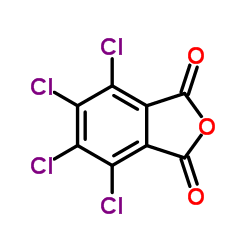
Tetrachlorophthalic anhydride structure
|
Common Name | Tetrachlorophthalic anhydride | ||
|---|---|---|---|---|
| CAS Number | 117-08-8 | Molecular Weight | 285.896 | |
| Density | 1.9±0.1 g/cm3 | Boiling Point | 371.0±0.0 °C at 760 mmHg | |
| Molecular Formula | C8Cl4O3 | Melting Point | 253-257 °C(lit.) | |
| MSDS | Chinese USA | Flash Point | 161.6±25.5 °C | |
| Symbol |



GHS05, GHS08, GHS09 |
Signal Word | Danger | |
| Name | tetrachlorophthalic anhydride |
|---|---|
| Synonym | More Synonyms |
| Density | 1.9±0.1 g/cm3 |
|---|---|
| Boiling Point | 371.0±0.0 °C at 760 mmHg |
| Melting Point | 253-257 °C(lit.) |
| Molecular Formula | C8Cl4O3 |
| Molecular Weight | 285.896 |
| Flash Point | 161.6±25.5 °C |
| Exact Mass | 283.860168 |
| PSA | 43.37000 |
| LogP | 3.56 |
| Vapour Pressure | 0.0±0.8 mmHg at 25°C |
| Index of Refraction | 1.656 |
| Stability | Stable. Reacts with water. Combustible. Incompatible with strong oxidizing agents. Air and moisture sensitive. |
| Water Solubility | 0.8 mg/L (21 ºC) |
CHEMICAL IDENTIFICATION
HEALTH HAZARD DATAACUTE TOXICITY DATA
|
| Symbol |



GHS05, GHS08, GHS09 |
|---|---|
| Signal Word | Danger |
| Hazard Statements | H317-H318-H334-H350-H373-H410 |
| Precautionary Statements | P201-P261-P273-P280-P305 + P351 + P338-P308 + P313 |
| Hazard Codes | T:Toxic |
| Risk Phrases | R41;R42/43;R45;R50/53 |
| Safety Phrases | S53-S22-S24-S26-S37/39-S45-S60-S61 |
| RIDADR | UN 3077 9/PG 3 |
| WGK Germany | 2 |
| RTECS | TI3450000 |
| Packaging Group | III |
| Hazard Class | 9 |
| HS Code | 2917399090 |
| Precursor 8 | |
|---|---|
| DownStream 10 | |
| HS Code | 2932999099 |
|---|---|
| Summary | 2932999099. other heterocyclic compounds with oxygen hetero-atom(s) only. VAT:17.0%. Tax rebate rate:13.0%. . MFN tariff:6.5%. General tariff:20.0% |
|
Allergic reactions to industrial chemicals.
Clin. Immunol. Rev. 2(1) , 1-58, (1983)
|
|
|
Acid anhydrides.
Clin. Exp. Allergy 21 Suppl 1 , 234-40, (1991)
|
|
|
Immunologic specificity of IgG against trimellityl-human serum albumin in serum samples of workers exposed to trimellitic anhydride.
J. Lab. Clin. Med. 121(6) , 792-6, (1993) The specificity of immunoglobulin G (IgG) against trimellityl-human serum albumin (TM-HSA) in serum samples from 11 workers exposed to trimellitic anhydride (TMA) was characterized in this study. Leve... |
| 4,5,6,7-Tetrachloro-1,3-isobenzofurandione |
| 1,3-Isobenzofurandione, 4,5,6,7-tetrachloro- |
| Tetrachlorophthalic anhydride |
| 4,5,6,7-Tetrachloro-2-benzofuran-1,3-dione |
| MFCD00005920 |
| EINECS 204-171-4 |
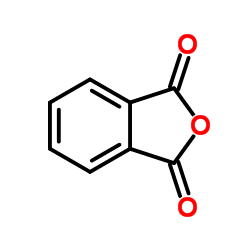 CAS#:85-44-9
CAS#:85-44-9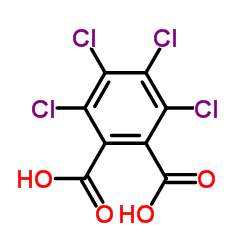 CAS#:632-58-6
CAS#:632-58-6 CAS#:84333-99-3
CAS#:84333-99-3 CAS#:91-20-3
CAS#:91-20-3![Perchlor-bicyclo[4.2.0]octatrien-(1.5.7) Structure](https://image.chemsrc.com/caspic/148/34973-71-2.png) CAS#:34973-71-2
CAS#:34973-71-2![2,3,4,5,7,8-Hexachlorbicyclo[4.2.0]octa-1,3,5-trien-7,8-diylsulfat Structure](https://image.chemsrc.com/caspic/251/84333-84-6.png) CAS#:84333-84-6
CAS#:84333-84-6 CAS#:7664-93-9
CAS#:7664-93-9![Benzoic acid,2,3,4,5-tetrachloro-6-[(diethylamino)carbonyl]- Structure](https://image.chemsrc.com/caspic/055/6310-29-8.png) CAS#:6310-29-8
CAS#:6310-29-8 CAS#:31039-74-4
CAS#:31039-74-4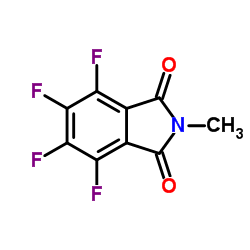 CAS#:33795-85-6
CAS#:33795-85-6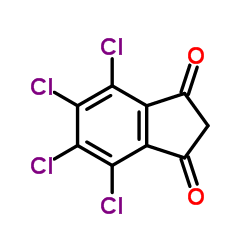 CAS#:30675-13-9
CAS#:30675-13-9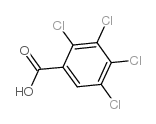 CAS#:50-74-8
CAS#:50-74-8 CAS#:90348-16-6
CAS#:90348-16-6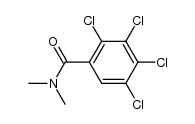 CAS#:104517-34-2
CAS#:104517-34-2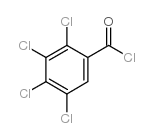 CAS#:42221-52-3
CAS#:42221-52-3 CAS#:4466-59-5
CAS#:4466-59-5 CAS#:446-17-3
CAS#:446-17-3![2',4',5',7'-Tetrabromo-4,5,6,7-tetrachloro-3',6'-dihydroxy-3H-spi ro[2-benzofuran-1,9'-xanthen]-3-one structure](https://image.chemsrc.com/caspic/476/2134-15-8.png) CAS#:2134-15-8
CAS#:2134-15-8
